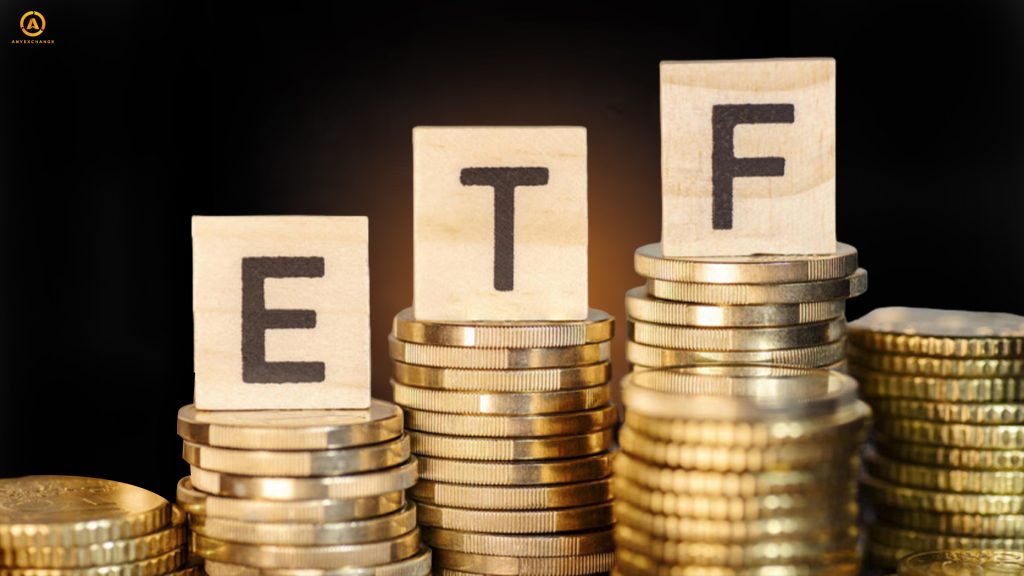
After the successful launch of spot bitcoin ETFs earlier this year, the market has been waiting for a similar instrument to be launched for the “digital silver” cryptocurrency, Ethereum. And so, on May 23, the SEC (Securities and Exchange Commission) approved applications to list exchange-traded funds on ETH, and on July 23, the first trades began.
Not enough time has passed to conduct a thorough analysis, but experts are expressing different views on the extent of the impact of ETFs on the price of Ethereum, on the level of acceptance of the cryptocurrency by a wide range of investors, on how ETFs will change the Ethereum market, and if they will.
In this article, let’s take a closer look at what is the essence of Ethereum-based ETFs, what is the impact of ETH ETFs on the Ethereum market, and what prospects await the second most capitalized cryptocurrency after the launch and application of the new financial instrument.
ETH cryptocurrency
Let’s briefly recall what it is.
ETH (Ethereum, Ether) is the cryptocurrency of the Ethereum blockchain, the world’s most advanced network for creating decentralized services using smart contracts. The blockchain is the foundation for the vast majority of DeFi protocols and decentralized applications (DApps) that exist today. The network has pioneered NFT, tokenization technologies for real-world assets, user identification services using ZKP, and many other cutting-edge developments.
The main challenge facing blockchain programmers is to build an efficient, scalable infrastructure that can meet the demands of a rapidly growing ecosystem. This is gradually being realized through the deployment of layer 2 solutions. Active work is also underway to implement sharding into the core network architecture.
ETH is an Ethereum token used for blockchain transactions and gas payments. At the time of writing, according to CoinMarketCap, the current price of ETH is $2,380. The coin has the second largest market capitalization after bitcoin at $286.573 billion.
ETF concept

An ETF (Exchange-Traded Fund) is a type of investment fund whose shares are traded on an open exchange. This type of fund appeared in 1993 and is familiar to traditional financial markets. The value of the fund’s shares tracks an asset (commodity, security or currency) and is linked to its price. This means that the share price is linked to the value of the underlying asset and moves in line with its fluctuations. In this way, an investor who buys shares on a traditional stock exchange has the opportunity to profit from the asset without directly owning it.
The cryptocurrency market has certain expectations of ETFs: this instrument, which combines traditional and decentralized systems, increases the availability of digital assets to a wide range of investors. Today, anyone with no special knowledge of cryptocurrencies can earn higher profits than those offered by traditional financial mechanisms. All they have to do is buy shares on a familiar trading platform.
The fact that ETFs on cryptocurrencies store assets and participate in trading is also crucial for investors, while legislation on digital assets is still in its infancy. This fact also increases investor confidence, as they are putting money into a regulated and safe financial product. As the SEC has been unable to decide what asset class cryptocurrencies belong to for a decade, all applications for digital asset ETFs (and there have been many) have been rejected. And now, this year, the tide has finally turned and cryptocurrency ETFs have become available.
How does the Ethereum ETF work?

The mechanism of the ETH-ETF is identical to what works for bitcoin and looks something like this:
- An authorized agent (custodian) of an equity-issuing fund purchases a certain amount of Etherium for its balance sheet.
- The ETF fund issues shares for the amount of assets purchased and lists them on an exchange.
- Individual investors buy shares in the usual way.
- As security holders, investors earn profits or suffer losses as the underlying asset, ETH, fluctuates.
- When an investor wants to lock in income, he sells his shares and the issuer redeems them. In this case, the authorized agents sell the corresponding number of coins from their balance sheet.
At the time of writing, nine ETH ETFs from various issuers are traded on the market, the largest of which are financial giants BlackRock and Grayscale. The authorized custodian for most of them is the cryptocurrency exchange Coinbase.
How to invest in Ethereum via ETFs

- Monitor the market and determine which of the available ETFs suits your financial conditions (the amount of commission varies, some funds offer free asset management for the first six months to a year).
- Use the services of a broker or one of the crypto exchanges authorized to carry out this type of transaction.
- Decide on your personal strategy for investing in Ethereum ETFs. Decide how much money you are willing to invest, for how long, and what your financial goals are.
- Make a trade.
- Keep track of your investment portfolio, review market information and read forecasts. This will help you make quick decisions to preserve and grow your capital.
Advantages of the Ethereum ETF for investors
- Simplified access. Buying securities does not require the investor to perform technical actions associated with direct transactions with cryptocurrencies (opening wallets, providing secure storage, etc.).
- Increased liquidity. Fund managers, as professional market participants, use additional resources to improve the liquidity of the underlying asset, thus ensuring the positive impact of ETFs on Ethereum liquidity.
- Minimal risks due to the regulation of the Ethereum ETF as a traditional fund. A cryptocurrency fund of this type is fully legal, transparently regulated, and investors’ interests are protected by the norms of current legislation.
- Effective diversification. Digital assets have a low correlation with the traditional stock market. Therefore, ETH ETF securities are an optimal instrument for diversification of traditional investment portfolios.
Risks of Ethereum ETFs for Investors
- Volatility. Ethereum ETFs are subject to the volatility inherent in the cryptocurrency market, albeit to a lesser extent. Traditional investors are not accustomed to dealing with a wide range of asset price fluctuations.
- Counterparty risks. If the issuer goes bankrupt, the shares may lose value as a derivative instrument.
- Losses. An investor who does not own the cryptocurrency directly will miss out on potential income from the possible use of the asset in DeFi (in staking programs, etc.).
The situation with ETH after the launch of the ETFs
Amid the approval of the SEC filings, the price of ETH rose significantly and hovered around $3,800 in the last decade of May 2024. The positive outlook for Ethereum with the ETF fueled the price increase due to the following factors:
- The significance of the event for the crypto industry and historical evidence of increased demand and prices when ETFs are launched in traditional markets.
- Ease of entry into the investment. Investors are acting in a familiar scenario of buying stocks where they don’t have to make transactions with cryptocurrency and store it in their wallet. The number of investors has increased dramatically, stimulating demand.
- Reduction of available supply on the open markets due to the accumulation of a large amount of ETH on the balance sheets of exchange-traded funds. High demand persisted, supply decreased, or quotes increased.
Further, the situation became ambiguous. The outflow of capital from ETFs was replaced by an inflow, the price of the asset fluctuated, and by the end of August, Ethereum fell into very bad times. Bitcoin ETFs saw steady inflows, while ETH ETFs did not. Ethereum’s post-ETF liquidity declined, as evidenced by a 20% drop in market depth for ETH pairs.
Most experts tend to believe that the culprit of the situation was the Grayscale Ethereum Trust (ETHE), which showed almost daily capital outflows. Investors were pulling out due to high commissions, which are about five times higher than the market average.
On the other hand, BlackRock’s iShares Ethereum Trust (ETHA), Fidelity Ethereum Fund (FETH) and Bitwise Ethereum ETF (ETHW) managed to balance the picture somewhat with inflows into their funds.
At the end of September, the situation for the second cryptocurrency improved. After the constant outflow of funds observed since July and going into the minus by $624.17 million, ETH ETFs changed their vector and began to attract significant amounts of funds. Investment giant BlackRock with its iShares Ethereum Trust (ETHA), which has been conducting a massive promotion campaign for the financial product for retail investors and offering optimal financial conditions, continues to hold the top position in terms of inflows. So the trend for ETFs is positive. And since the beginning of October, spot bitcoin ETFs have suffered losses, while ETH ETFs are attracting more and more investor interest.
Ethereum prospects with the launch of ETFs
According to experts, the general decline in prices of the second cryptocurrency is not directly related to ETH ETFs. And most of them are inclined to believe that Bitwise investment director Matt Hougan was right when he said: “It’s cool to hate Ethereum right now. But I bet it’s going to look stupid in the long run.”
Yes, Ethereum is not having the best of times, considering that the price of the coin has fallen by a third since the beginning of the summer. There are objective reasons for this, but they have nothing to do with the launch of ETFs. Analysts formulate them as follows:
- increased competition from Solana and other blockchains that offer better throughput capacity;
- decrease in the number of transactions in the core network due to the shift of focus to layer 2, which triggers the inflation mechanism by slowing down the processes of “burning” tokens;
- weakened motivation of validators after the Dencun hard fork in March 2024, when transaction processing fees in the network dropped significantly;
- macroeconomic factors.
The positive role of ETFs in the adoption of Ethereum cannot be underestimated, as more and more new retail investors are entering cryptocurrencies thanks to this instrument.
As for Ethereum ETFs as a topic of interest for institutional investors, so far institutional investors have only begun to explore bitcoin-based funds. Despite rosy predictions, bitcoin ETFs have failed to attract budget-conscious institutional capital more than 9 months after their launch. And for the market to see institutional investment in Ethereum via ETFs, analysts say it should take at least a year.
Also, when the movement of the second cryptocurrency takes a steady upward vector, the market will see the positive impact of ETH ETFs on other altcoins. In particular, this opinion is held by Darius Tabai, CEO of the decentralized exchange Vertex. According to him, the market is not yet able to assess the impact of ETH ETFs, which can provide altcoins with growth prospects of more than 25%.
So, the general opinion of experts is that nothing threatens the future of Ethereum ETFs and the market will still be able to fully appreciate the importance of this instrument. It will just take some time.
Thank you for your attention. Invest safely and profitably!
With the help of our exchanger you can buy or sell cryptocurrency at the most favorable rate. Also on the site are available fast money transfers around the world.





